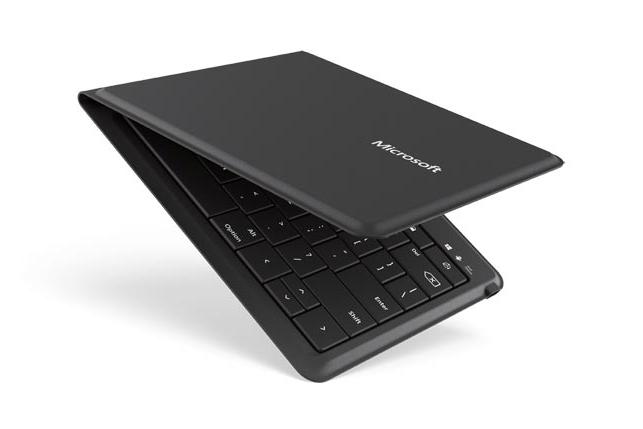
In September, Microsoft unveiled its Universal Mobile Keyboard, which connects to Windows, Android and iOS devices via Bluetooth. The company recently announced the next generation of that keyboard: The Microsoft Universal Foldable Keyboard.
The new keyboard, whose inspired name says it all, has a lot in common with its predecessor: compatibility with Windows, Android and iOS devices; Bluetooth connectivity; and the ability to switch between multiple devices on different operating systems with a tap of a button. The Universal Foldable Keyboard adds foldability on top of all that.
When unfolded, the new Universal Foldable Keyboard measures 11.61” wide and 4.9” tall, which is larger than the Universal Mobile Keyboard. However, when folded up, the new keyboard is smaller and slightly thinner than the old version, which had a cover that folded over the keyboard. The new portable keyboard also features water-repellent keys.
It’s worth noting that the Universal Foldable Keyboard doesn’t have the integrated stand to securely fit a tablet into, and the promised battery life is up to three months on a single charge (via a Micro-USB port), down from the six months on a single charge for the Universal Mobile Keyboard.
The Microsoft Universal Foldable Keyboard will sell for $99.95 when it debuts in July. The Universal Mobile Keyboard currently sells for $79.95.
Available at: Microsoft Store


